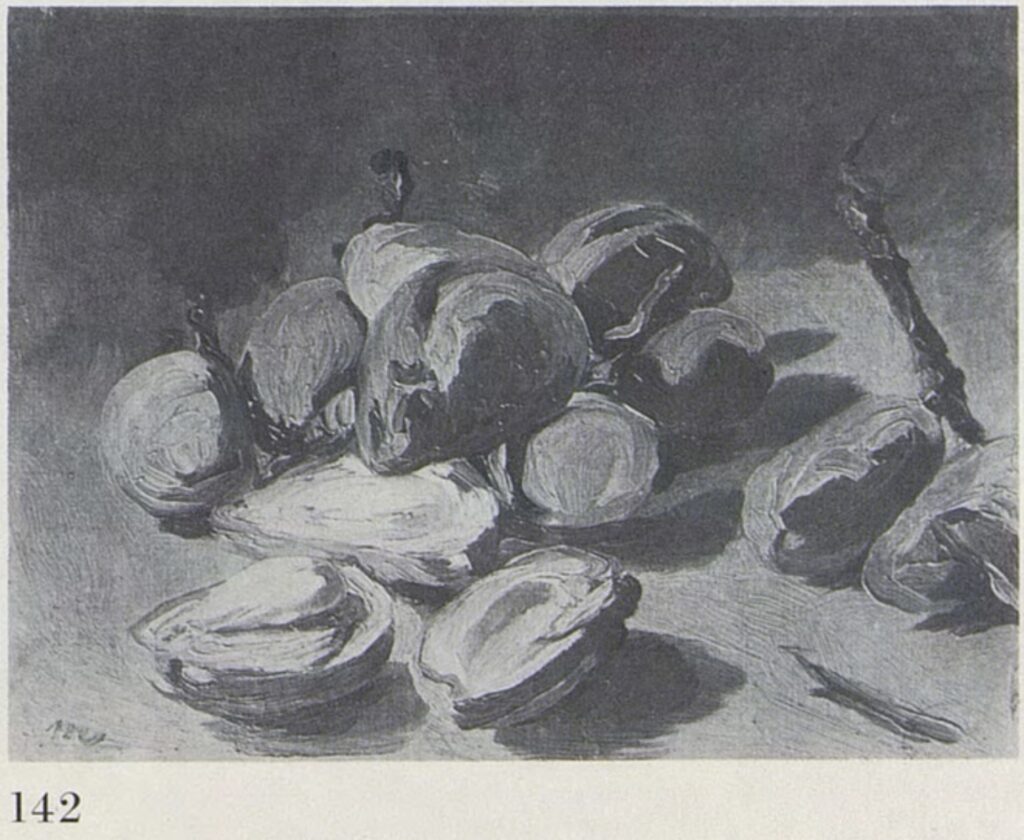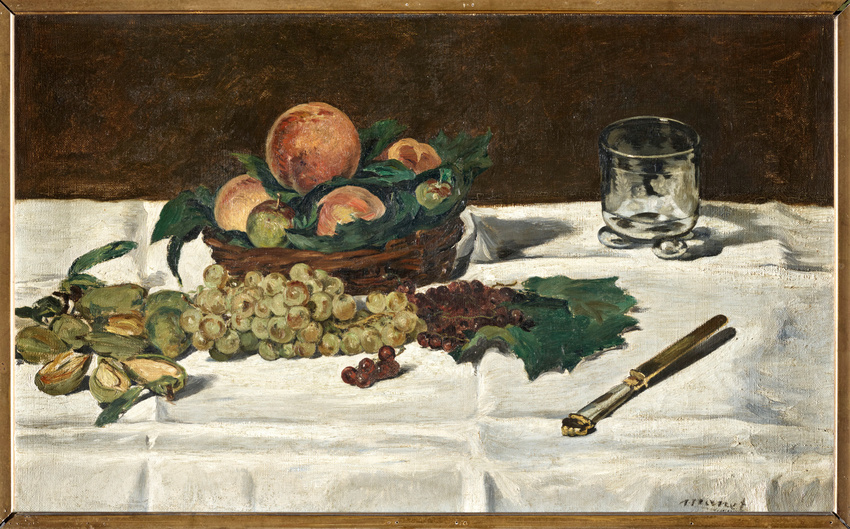
Researching some stuff on Manet and politics for an essay, I got stuck on this aside from Beth Archer Brombert’s 1996 biography, Edouard Manet: Rebel in a Frock Coat: through 1871 and the Franco-Prussian War, the Siege of Paris, the Paris Commune and its violent defeat and repercussions, Manet, Archer Brombert writes, “seemed unable to regain his equilibrium.”
In Paris in the aftermath, the only thing he managed to paint that Fall was a small (21 x 26 cm) still life of a pile of unripe almonds. Which turns out to be nearly identical to a detail of a still life he’d painted three years earlier. “As writers have been known to copy earlier pages of their own work or that of others just to get started again,” Archer Brombert explains/confesses, Manet copied himself. Then she goes a bit big: “Still lifes played an important role in Manet’s life; they distracted him when he was low and kept his hand and eye in practice…he turned to still lifes in moments of distress.”

[note: Archer Brombert cites Manet biographer Adolphe Tabarant for the date and interpretation of this painting. The Wildenstein Manet CR dates this painting to 1869, which would kind of wipe out this reading. The painting I think Manet’s said to have copied from, known in the CR as Fruits (RW 83), and at the Musée d’Orsay as Fruits sur une table, is actually dated to 1864, and was shown in Paris in 1865 and 1867. Not sure how this gets solved, unless the Amandes Vertes finally comes out of hiding and shows itself.]
